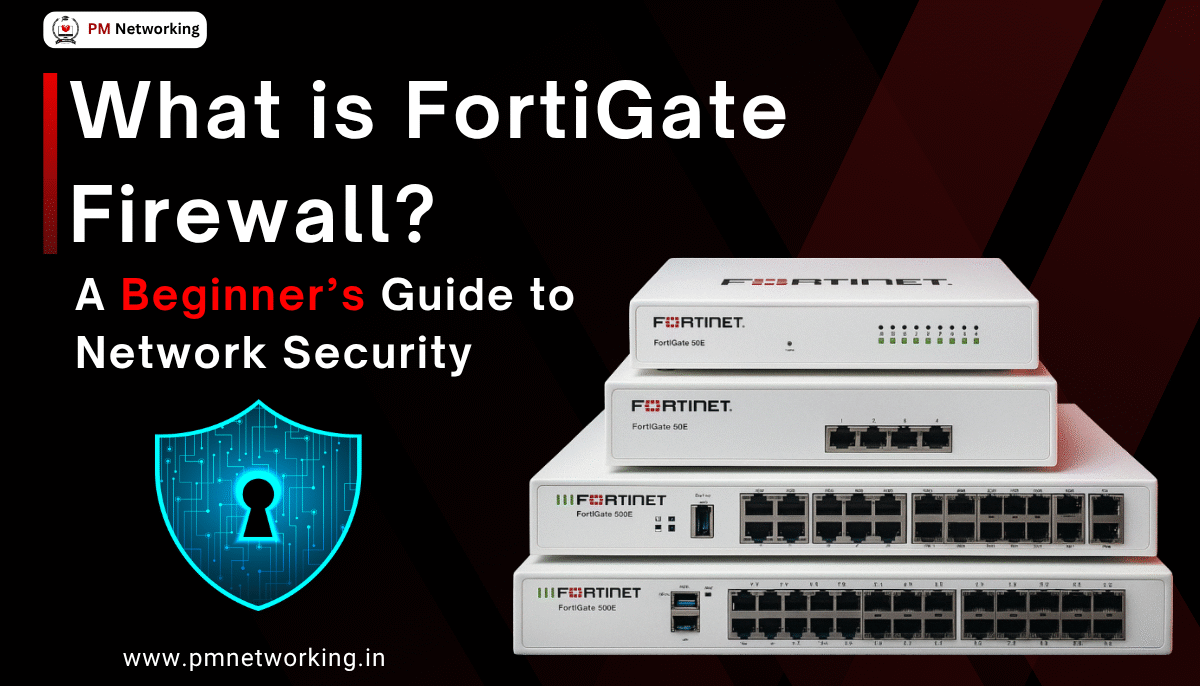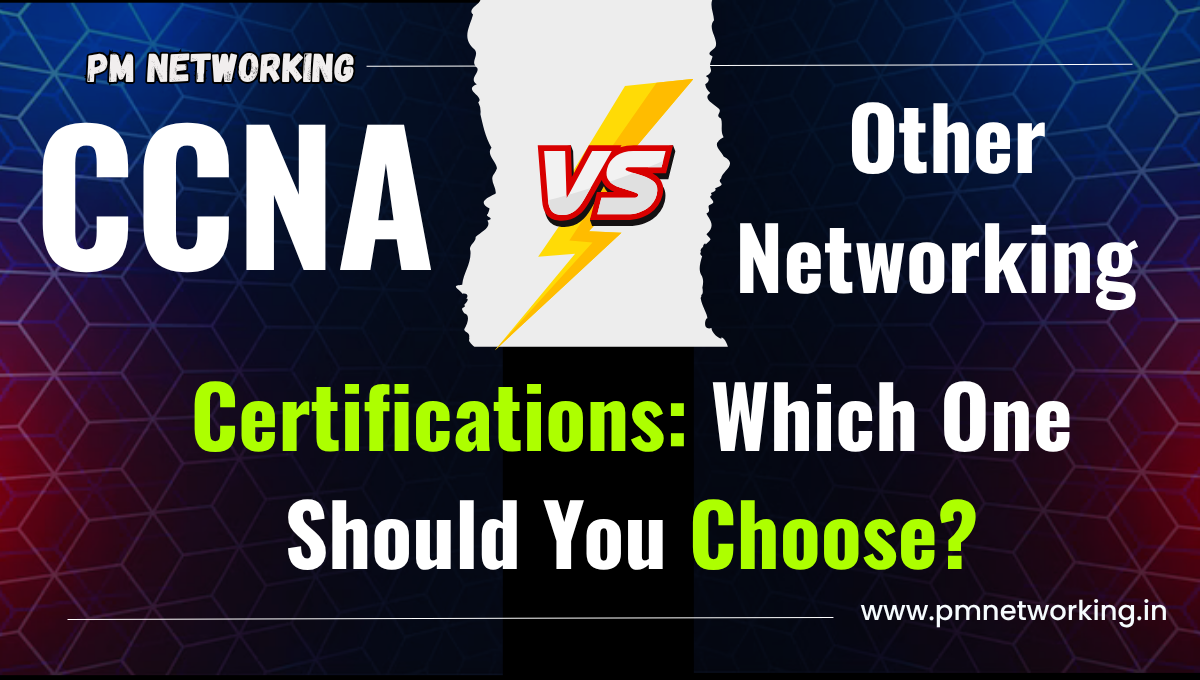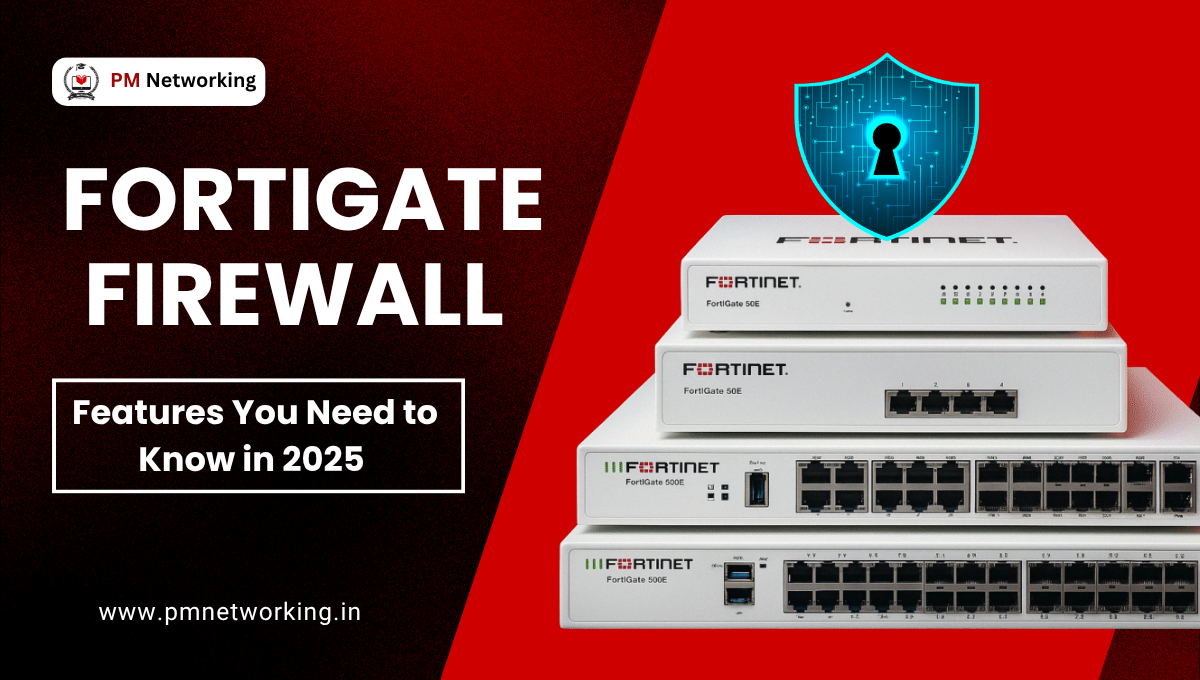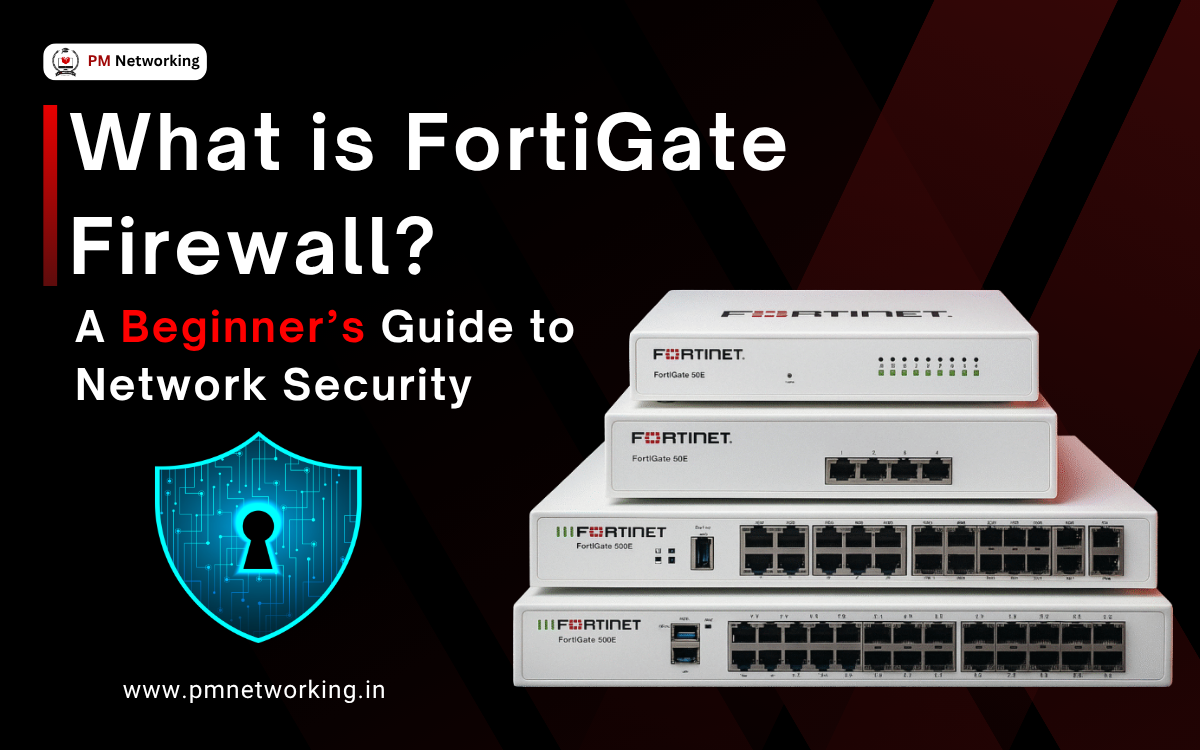
In today’s digital era, where the world is connected, cyber threats are consistently rising, and protecting your networking infrastructure is essential. To defend millions of organisations worldwide, FortiGate Firewall is widely used.
If you are new to network security, this article will break down everything in great detail that you need to know about FortiGate Firewall. We will know what it is, how it works and its key features, and why it is a leader in cybersecurity.
What is a FortiGate Firewall? The Simple Explanation
Imagine your business’s network as a fortress. A FortiGate firewall is the intelligent wall and gatekeeper surrounding it. It intelligently controls all the traffic coming in and going out. It decides what is allowed to pass based on a set of security rules.
Understanding How FortiGate Firewall Works — In Simple Terms
If you’ve worked with network security for a while, you’ve probably heard of FortiGate. It’s one of those firewalls that does a lot more than just block or allow traffic. Let me explain how it actually works in a way that makes sense if you’re not deep into the tech jargon.
1. Stateful Inspection — The Core Idea
Every decent firewall these days does stateful inspection, and FortiGate is no different.
Basically, it keeps track of every active connection going through your network. If you open a webpage, FortiGate remembers that request and only lets the correct returning data packets come back to you. Anything random or suspicious that doesn’t match gets dropped.
It’s a bit like a bouncer checking names on the guest list — only letting in people who are supposed to be there.
2. Next-Generation Firewall (NGFW) Features
Here’s where FortiGate really steps ahead of old-school firewalls. Traditional ones only cared about ports — like “Port 80 open = allow web traffic.” But that’s not very smart anymore because malware can also use those same ports.
FortiGate looks inside the traffic to see what’s actually going on. It can tell the difference between someone browsing Facebook and someone trying to sneak in Skype traffic or something worse. Even if an app uses weird ports, it still figures it out.
In short, it doesn’t just see numbers — it understands context.
3. Unified Threat Management (UTM)
Another reason people like FortiGate is because it bundles a bunch of security features into one device. You don’t have to juggle five different systems. It comes with:
- IPS (Intrusion Prevention): Blocks known attacks and exploits.
- Antivirus/Antimalware: Scans data in real-time so viruses or ransomware don’t slip in.
- Web Filtering: Lets you control or block harmful or inappropriate sites.
- VPN: Gives remote users a secure, encrypted tunnel to access your internal network safely.
It’s pretty much an all-in-one package that’s easier to manage and maintain.
Why a Lot of Teams Choose FortiGate?
- All-in-one Protection: Instead of using multiple tools that might not talk to each other, you get everything working together.
- Performance: FortiGate has its own dedicated security processors, which means even with all the features turned on, your network still runs fast.
- Cost Efficiency: One device doing multiple jobs usually costs less than buying a separate firewall, VPN box, and antivirus.
- Scalability: There’s a FortiGate for every setup — small offices, big enterprises, even ISPs.
Visibility: You can see everything happening on your network in one dashboard — users, devices, applications, and any suspicious behavior.







0 Comments